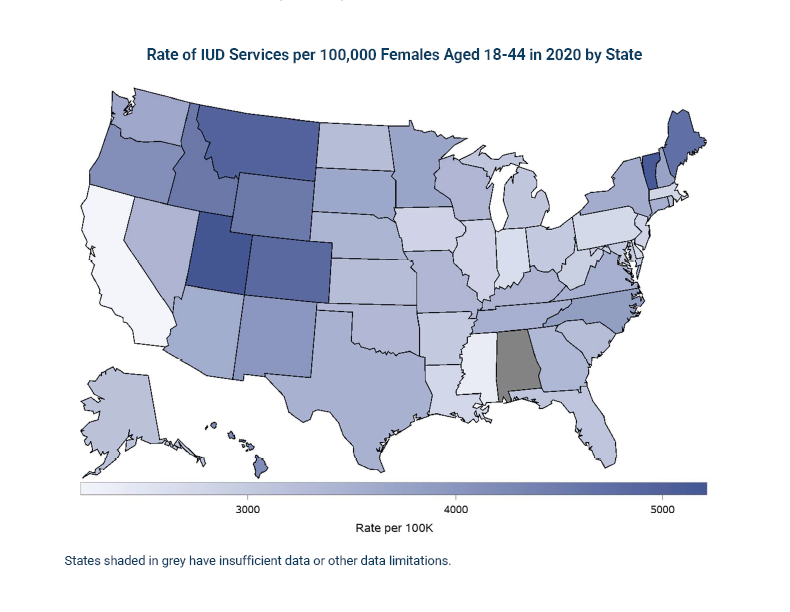ESI
-
From Prenatal through Postpartum Care, it Cost More Than $24,000 to Have a Baby on Average
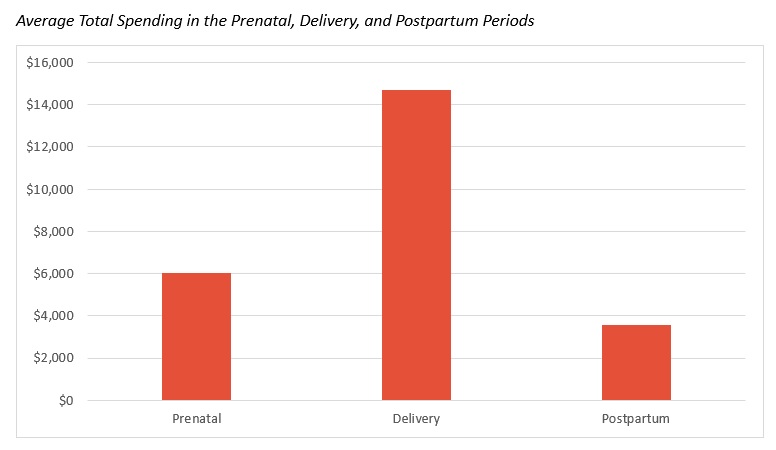 Read more: From Prenatal through Postpartum Care, it Cost More Than $24,000 to Have a Baby on Average
Read more: From Prenatal through Postpartum Care, it Cost More Than $24,000 to Have a Baby on AverageTotal Spending Averaged $24,336 across the Prenatal, Childbirth, and Postpartum Periods among ESI Enrollees HCCI has highlighted the high cost of childbirth in the United States, but delivery is only one component of the full financial cost of having a baby. The cost of prenatal and postpartum care may cause people to forgo appropriate services,…
-
Focusing on Seven Services Could Eliminate More Than Two-Thirds of Low-Value Care in HCCI’s ESI Data
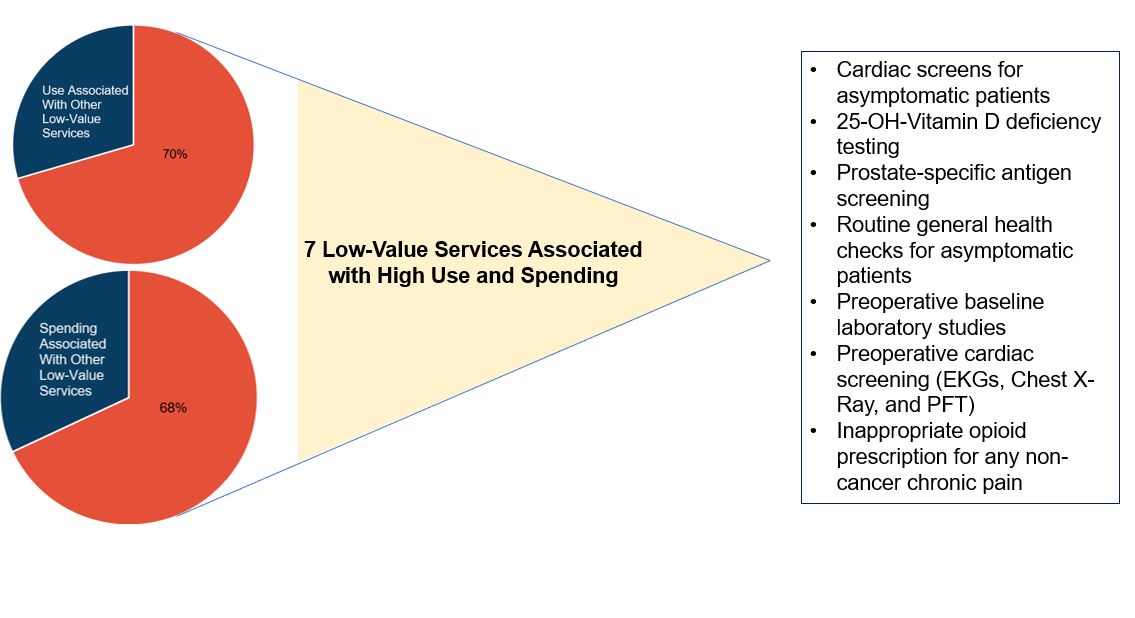 Read more: Focusing on Seven Services Could Eliminate More Than Two-Thirds of Low-Value Care in HCCI’s ESI Data
Read more: Focusing on Seven Services Could Eliminate More Than Two-Thirds of Low-Value Care in HCCI’s ESI DataThere is substantial evidence that people in the U.S. receive health care services judged to be of low-value. These services are identified as low value based on recommendations from the U.S. Preventive Services Task Force (USPSTF) and professional medical societies that there is little to no clinical value associated with their provision and potential for…
-
HCCI Data Brief: Sexual and Reproductive Health Among People with Employer-Sponsored Insurance
Read more: HCCI Data Brief: Sexual and Reproductive Health Among People with Employer-Sponsored InsuranceReproductive and sexual health services play an important role in daily life and wellbeing for many people. These services include preventive services (such as screenings for sexually transmitted infections and reproductive cancers), contraceptive services, and services relating to pregnancy and childbirth. The objective of this report is to provide national and state data on the use…
-
ESI Enrollees Paid $853 on Average Out-of-Pocket for Health Care in 2020, But Some People Paid Over Four Times as Much
 Read more: ESI Enrollees Paid $853 on Average Out-of-Pocket for Health Care in 2020, But Some People Paid Over Four Times as Much
Read more: ESI Enrollees Paid $853 on Average Out-of-Pocket for Health Care in 2020, But Some People Paid Over Four Times as MuchHigh out-of-pocket costs for health care services can put necessary care and medications out of reach for many people. In one survey, nearly half of adults reported difficulty paying for health care services. In this brief, we used HCCI’s commercial claims dataset, which includes health care spending information for over one-third of the population who…
-
HCCI Spotlights National Diabetes Month: ESI Enrollees with Diabetes Face High Out-of-Pocket Costs. A Cap on Insulin Costs Would Help Many.
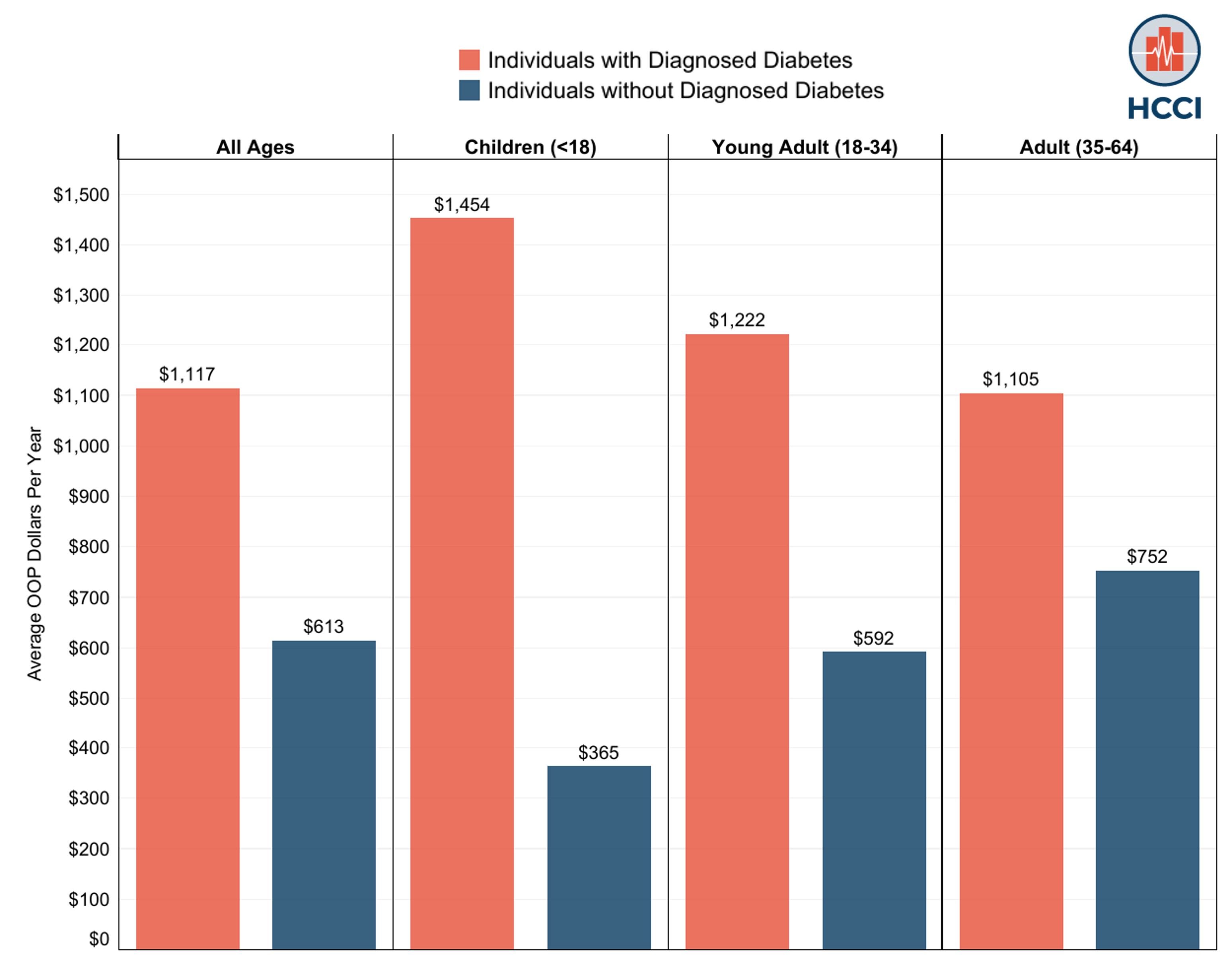 Read more: HCCI Spotlights National Diabetes Month: ESI Enrollees with Diabetes Face High Out-of-Pocket Costs. A Cap on Insulin Costs Would Help Many.
Read more: HCCI Spotlights National Diabetes Month: ESI Enrollees with Diabetes Face High Out-of-Pocket Costs. A Cap on Insulin Costs Would Help Many.Diabetes is a chronic health condition that affects over 10% of the U.S. population. It is possible for people who are diagnosed with diabetes to live a healthy, long life if the condition is managed properly. However, management often involves significant health care use, which can be costly for patients. Over the past few months, we used HCCI’s…
-
Greater Share of Children’s Emergency Room Visits were for Mental Health Needs in 2020
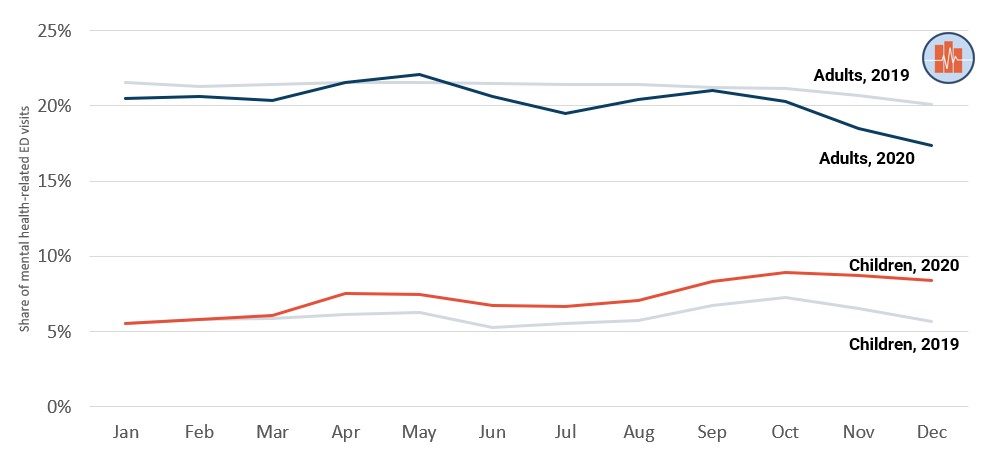 Read more: Greater Share of Children’s Emergency Room Visits were for Mental Health Needs in 2020
Read more: Greater Share of Children’s Emergency Room Visits were for Mental Health Needs in 2020In 2021, the American Academy of Pediatrics, the American Academy of Child and Adolescent Psychiatry, and the Children’s Hospital Association, declared a National State of Emergency in Children’s Mental Health associated with the COVID-19 pandemic, including the loss of caregivers, school closures, social isolation, and gaps in health care (see citations below). Understanding the effect…
-
COVID-19 Disrupted On-Time Vaccination Rates In ESI and Medicaid in 2020
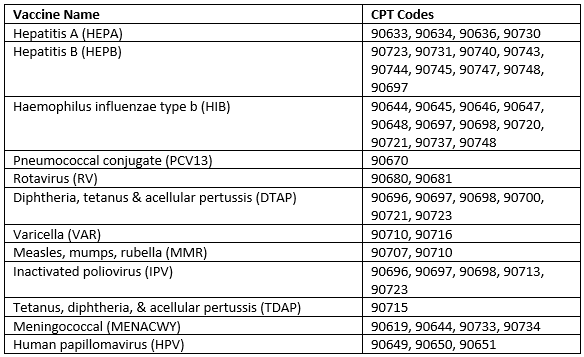 Read more: COVID-19 Disrupted On-Time Vaccination Rates In ESI and Medicaid in 2020
Read more: COVID-19 Disrupted On-Time Vaccination Rates In ESI and Medicaid in 2020It is no secret that the COVID-19 pandemic upended the U.S. health care system in 2020, with effects still being felt in 2022. HCCI previously published a brief that showed precipitous drops in the utilization of several preventive health care services in early 2020. Several news outlets have also covered the effect of the pandemic on routine…
-
Use of and Spending on Firearm-Related Injuries Increased among People with Employer-Sponsored Health Insurance from 2016-2020
 Read more: Use of and Spending on Firearm-Related Injuries Increased among People with Employer-Sponsored Health Insurance from 2016-2020
Read more: Use of and Spending on Firearm-Related Injuries Increased among People with Employer-Sponsored Health Insurance from 2016-2020The Centers for Disease Control and Prevention (CDC) reports that there were more than 45,000 firearm-related deaths in 2020; in addition, evidence suggests that there were an additional 2-3 nonfatal firearm injuries seen per death. Recent studies estimate that more than 200 people are injured by firearms each day, and the notable tragedies in 2022,…
-
Employer-Sponsored Health Insurance Plays a Significant Role in Vulnerable and Rural Communities
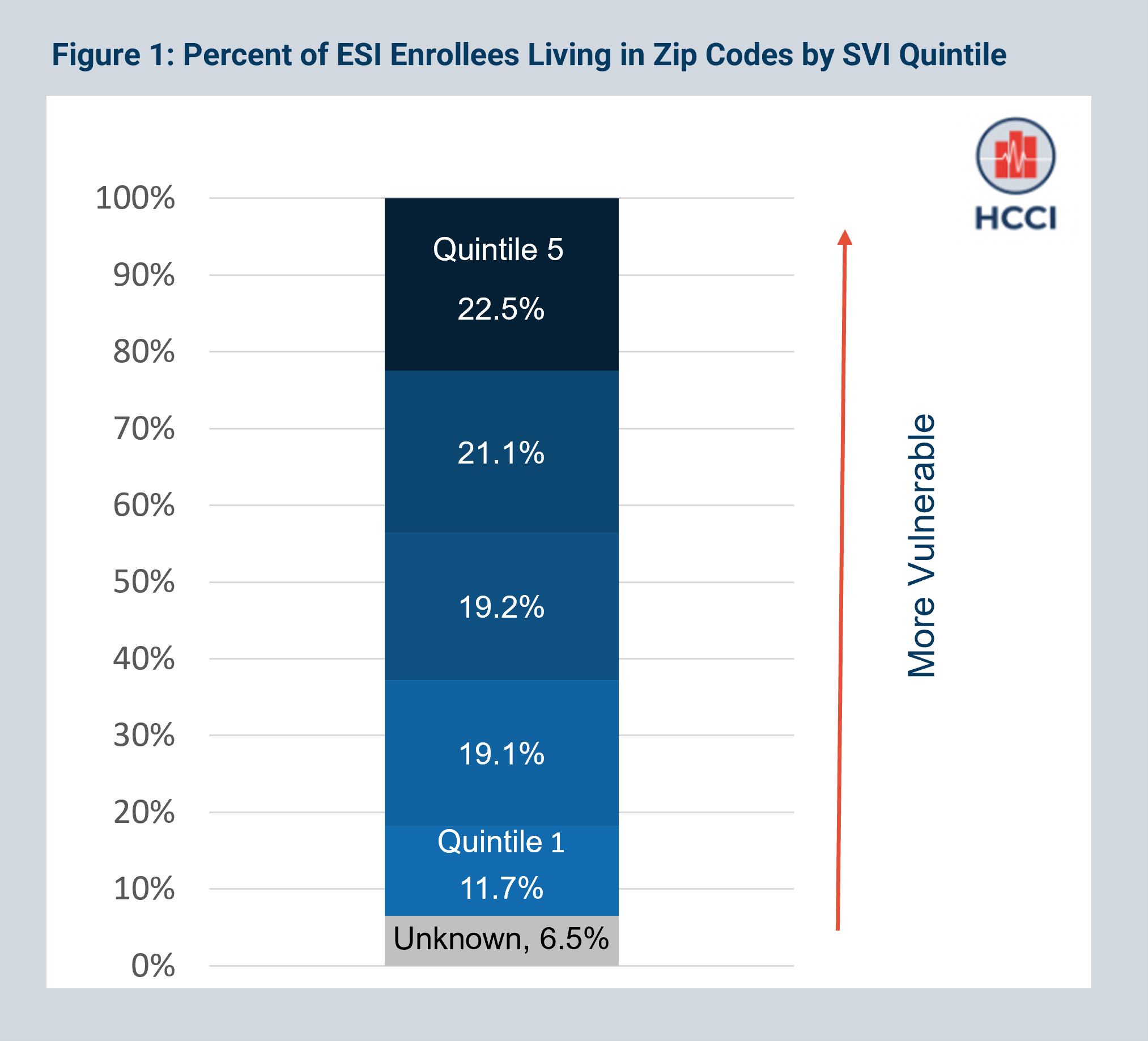 Read more: Employer-Sponsored Health Insurance Plays a Significant Role in Vulnerable and Rural Communities
Read more: Employer-Sponsored Health Insurance Plays a Significant Role in Vulnerable and Rural CommunitiesHealth care insurance claims data capture what health care services people use and how much they pay. These data are crucial for understanding the state of the U.S. health care system, including aspects that function well, those that need improvement, and how to achieve better health and access to care across populations. In this report,…
-
One-Third of Births Occurred by C-Section in ESI and Medicaid in 2020
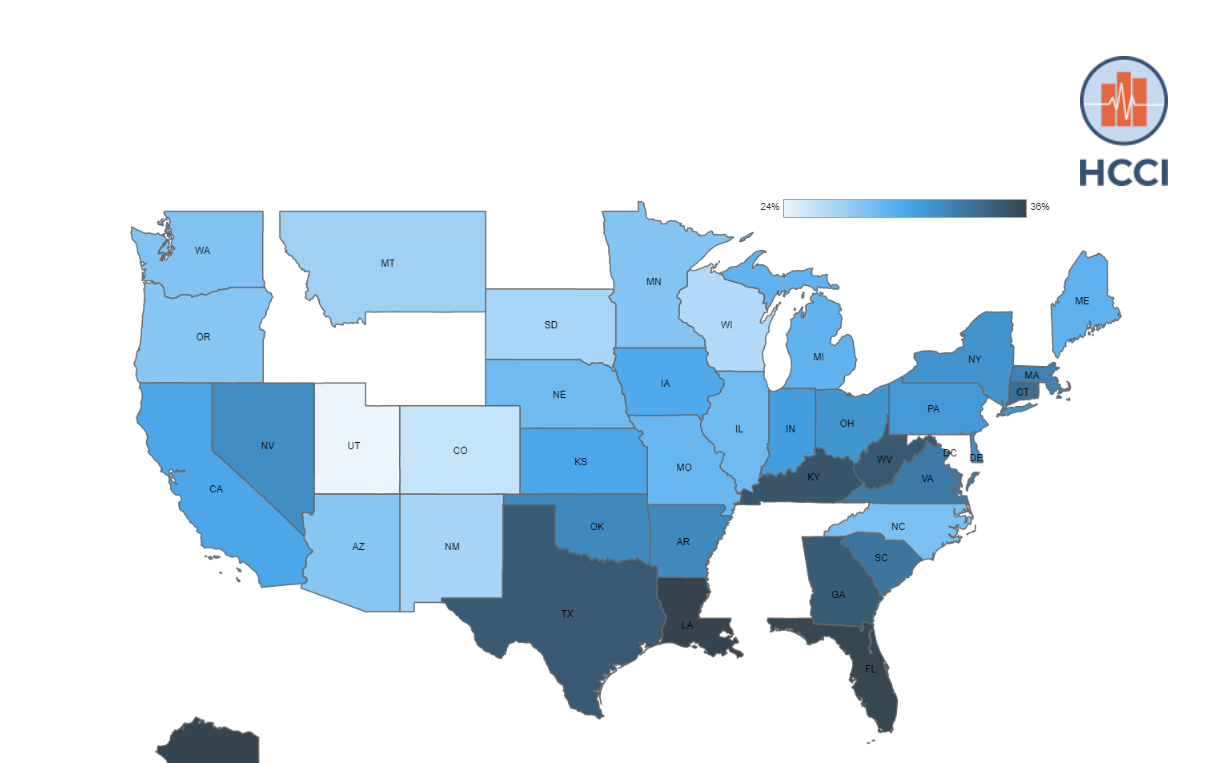 Read more: One-Third of Births Occurred by C-Section in ESI and Medicaid in 2020
Read more: One-Third of Births Occurred by C-Section in ESI and Medicaid in 2020Caesarean sections (c-sections) are often life-saving procedures that can prevent injury and death among birthing people and newborns. At the same time, when they are not medically necessary, c-sections may have higher risks to babies and birthing people than vaginal births. Monitoring rates of c-sections among birthing people is an important component of efforts to improve…

